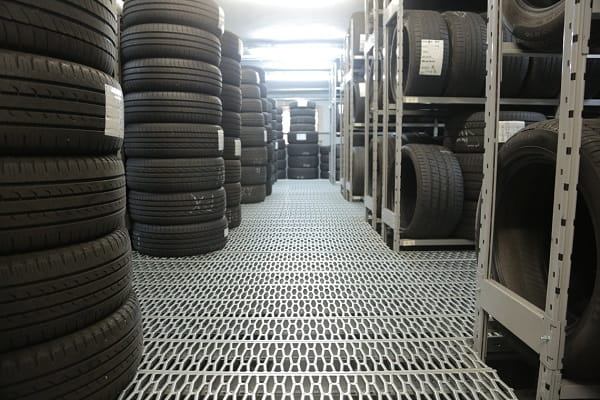8 Countries With The Largest Diamond In The World 2024
Here we’ve listed the top countries with the largest diamond mining in the world, some of them have over half of their population living in abject poverty and some are not over 50 years old, and have a per capita income of 400 euros.
Diamond is one of the most expensive and most adored solid element in the world, it is well arranged in crystal form and often used in making charming ornaments.
The Countries With The Largest Diamond Mining In The World
Seven of the ten most diamond-producing countries are African. We are talking about the poorest continent. The deposits of this very valuable stone do not have a positive impact on a population that, as in the case of Sierra Leone, has a life expectancy of 50 years and a per capita income of about 400 euros.

It is the great contradiction: immense mineral wealth, enormous inequalities. Three fully developed countries appear on this list, prepared with data from the World Bank and The Kimberley Process, an international organization related to the UN that analyzes the international diamond market. In the image, a street in Johannesburg, South Africa.
Sierra Leone
On the Atlantic coast of Africa, Sierra Leone was founded by the British Empire to house freed slaves. The river drainage areas in the southeast of the country are littered with diamonds. In 2014 it achieved a production of 620,000 carats, around 50% of all its exports.
The extraction is carried out by private companies, although there is a artisanal diamond extraction industry in the floodplains where in many cases they work in conditions of semi-slavery due to the lack of controls. Diamonds have been the main cause of the country’s instability since 1991, when an armed conflict broke out that was largely financed by the sale of these stones.
Today Sierra Leone is among the poorest countries in the world despite having huge mineral reserves. Wealth is distributed extremely unequally, and more than three quarters of the population lives below the poverty line. Life expectancy: 50 years Infant mortality rate: 87 deaths per 1,000 births Per capita income: 766 dollars (about 676 euros). In the image, an ordinary day in Freetown, capital of Sierra Leone.
In southern Africa, Namibia is a desert country populated by different tribal communities. Not in vain, there are 13 officially recognized languages. During the colonial period, it was occupied by the Dutch, Germans and English, and later came to be governed by South Africa. Only in 1989 did they choose their first president.
Namibia
In southern Africa, Namibia is a desert country populated by different tribal communities. Not in vain, there are 13 officially recognized languages. During the colonial period, it was occupied by the Dutch, Germans and English, and later came to be governed by South Africa. Only in 1989 did they choose their first president.
Under its soil, Namibia has enormous mineral reserves, including abundant deposits of diamonds. The nearly two million carats it produces annually are a very important part of its GDP. The main buyer of these resources is the European Union, although recently China is increasing its weight in the trade balance.
Namibia is one of the countries with the greatest inequality in the distribution of wealth, with marked differences between the urban and rural populations. The latter often suffers poorly. Life expectancy: 64 years. Infant mortality rate: 33 deaths per 1,000 births. Per capita income: 5,408.2 dollars (about 4,766 euros). In the image, one of the dunes of Kolmanskop, a ghost town a few kilometers from Luderitz, Namibia.
Zimbabwe
The enormous diamond deposits in the region attracted the British businessman and colonizer Cecil Rhodes at the end of the 19th century, who provided himself with extraction rights and became rich with the diamonds, founding the De Beers company, which still accounts for more than a third of the diamonds today.
The country was named Rhodesia in his honor, and became an English colony administered by large mining holdings until its independence in 1980 under the name Zimbabwe. Today, the diamond industry in Zimbabwe is under suspicion due to some reports of abuse or torture at the mines. However, the EU, under pressure from Belgium, the main diamond trading partner, decided to lift sanctions on the purchase of Zimbabwean stones.
Inflation in Zimbabwe is rampant and the country’s economic situation is precarious to the extreme. Life expectancy: 56 years. Infant mortality rate: 47 deaths per 1,000 births. Per capita income: 931.2 dollars (821 euros). In the image, one of the views of the Victoria Falls Bridge that crosses the Zambezi River.
South Africa
It was a British colony, and the wealth of its mines was one of the causes of the Boer wars against the Afrikaners, settlers of Dutch origin who would take power after the Second World War, giving shape to the racial apartheid regime that Mandela fought. At the apex of the southern cone, South Africa, like its neighbors, has diamond deposits as one of its main sources of income, although the country’s economy is more developed and diversified.
Diamond production is almost entirely controlled by the powerful company De Beers, owned by Cecil Rhodes (the same one that took over Zimbabwe) and the industry employs half a million people to extract the nearly 7 and a half million diamonds. carats per year that it manages to put into circulation.
Despite being the second economy in Africa with around 25% of the GDP of the entire continent, there are great inequalities, with significant fortunes in the business centers and high rates of unemployment and poverty in the most depressed areas. The largest diamond in the world was found in South Africa. Life expectancy: 57 years. Infant mortality rate: 34 deaths per 1,000 births. Per capita income: 6,482.8 dollars (5,724 euros).
Angola
Also located in southern Africa, along with other notable diamond producers, Angola suffered colonialism like its neighbors. It was Portugal who carried out the process. After independence, Angola plunged into a bloody and long-lasting civil war that left the country devastated, although since the 1990s the economy has grown at a good pace, in part thanks to its rich mineral deposits, including diamonds.
It is estimated that only 40% of the area rich in diamonds has already been explored, which would mean valuable reserves of this material. The standard of living of most Angolans is very low and their life expectancy and infant mortality rates are among the worst in the world.
Since most of the wealth is in the hands of a very small percentage of its inhabitants, it is a country with great economic inequalities. Life expectancy: 52 years. Infant mortality rate: 96 deaths per 1,000 births. Per capita income: 5,900 dollars (5,200 euros). In the image, aerial views of the capital of Angola, Luanda.
Australia
Most of Australia’s diamonds are located in the Argyle deposit, in the west of the country, although the low quality of its stones has motivated the decision to move extraction to other areas such as Merlin, in the northern territory. In total, more than nine million carats annually provide an enormous boost to the Australian GDP.
Today, Australia has a per capita income slightly higher than the United Kingdom, Germany and France, and high purchasing power parity. The nation is in second place in the Human Development Index carried out in 2015 by the United Nations, being surpassed only by Norway.
In recent years, the Australian economy has weathered the global economic downturn quite easily. Most of its exports are made to Asian countries such as China or Japan. Life expectancy: 82 years. Infant mortality rate: 3 deaths per 1,000 births. Per capita income: 61,925 dollars (about 54,698 euros). In the image, Bondi Beach, in Sydney, during one of its maritime exhibitions.
Canada
The second largest country in the world only discovered its enormous diamond deposits at most 30 years ago. An intensive search after finding the first deposits revealed the existence of large quantities of these stones in the north of the country, the Ekati mine being the largest. Since then it has become one of the main producers of diamonds, which they export and contribute to the wealth of what is one of the most prosperous countries in the world.
Its economy is, however, very diversified, and income is distributed fairly equitably. Canada is one of the countries with the highest development index in the world. Their diamonds are considered “conflict-free”, which makes them attractive to the consumer since at least they ensure that they are not financing mafia structures.
Canadian diamond production amounts to twelve million carats per year. Life expectancy: 81 years. Infant mortality rate: 4 deaths per 1,000 births. Per capita income: 50,235 dollars (44,387 euros). Image of Lake Abraham, in the province of Alberta.
DR Congo
Located in the heart of Africa, the Democratic Republic of the Congo, formerly called Zaire, was colonized by Belgium, which sought access to the region’s enormous mineral wealth. Following independence, the “African World War” devastated the country, and was largely financed by “blood diamonds” brutally mined from the rivers and floodplains that dot the region.
Even today it is one of the poorest countries in the world, with per capita income very poorly distributed. Instability and lack of infrastructure mean that trade with foreign countries has been drastically reduced, and it is often done secretly.
Read Also: Poorest Countries in the World – Updated List
The five million diamonds that it manages to extract annually are mostly using artisanal techniques, digging with their hands and in quite precarious positions. Life expectancy: 58 years. Infant mortality rate: 75 deaths per 1,000 births. Per capita income: 442.3 dollars (388 euros).







